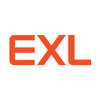Filter interviews by
Infotrack Systems Interview Questions and Answers
11 Interview questions
To delete customer table in SQL, use the DROP TABLE command.
Use the DROP TABLE command followed by the table name.
Make sure to backup the data before deleting the table.
Ensure that there are no dependencies on the table before deleting it.
Creating customer table in SQL
Define the table structure with appropriate data types for each column
Include columns for customer ID, name, address, email, phone number, etc.
Set appropriate constraints such as primary key, unique, not null, etc.
Consider adding additional columns for date of birth, gender, etc. if required
Create indexes on frequently queried columns for better performance
Updating customer table
Use UPDATE statement with SET clause to update table
Specify the column to be updated and the new value
Use WHERE clause to specify the condition for updating specific rows
Typing is the act of inputting text by pressing keys on a keyboard or other input device.
Typing involves using a keyboard or input device to enter text.
It is a fundamental skill for computer users and is used for various purposes such as writing documents, sending emails, and chatting.
Typing speed and accuracy are important factors in productivity and efficiency.
Examples of typing include composing an email, writi...
Joins are used to combine data from two or more tables based on a related column.
Types of joins: inner, left, right, full outer
Syntax: SELECT * FROM table1 JOIN table2 ON table1.column = table2.column
Can also use aliases for table names and columns
Joins can be nested or chained together
Indexes are used to improve the performance of SQL queries by reducing the time taken to retrieve data.
Indexes are created on one or more columns of a table.
They can be clustered or non-clustered.
Clustered indexes determine the physical order of data in a table.
Non-clustered indexes create a separate structure to hold the indexed data.
Indexes should be used judiciously as they can slow down data modification opera...
Triggers are special types of stored procedures that are automatically executed in response to certain events.
Triggers are used to enforce business rules or to perform complex calculations that involve multiple tables.
They can be used to audit changes to data, or to replicate data across multiple tables.
Triggers can be defined to execute before or after an INSERT, UPDATE, or DELETE statement.
They can also be defin...
Cursors are used to retrieve data from a result set one row at a time.
Cursors are used when we need to perform operations on individual rows of a result set.
They are declared, opened, fetched, and closed.
They can be used to update or delete data in a table.
They can be slow and memory-intensive, so should be used sparingly.
Example: DECLARE cursor_name CURSOR FOR SELECT * FROM table_name;
Example: OPEN cursor_name; F...
Types of joins in SQL are Inner Join, Left Join, Right Join, Full Outer Join, Cross Join.
Inner Join returns only the matching rows from both tables.
Left Join returns all the rows from the left table and matching rows from the right table.
Right Join returns all the rows from the right table and matching rows from the left table.
Full Outer Join returns all the rows from both tables.
Cross Join returns the Cartesian p...
Subsets of SQL are different types of SQL languages used for specific purposes.
Data Definition Language (DDL) - used to define database schema
Data Manipulation Language (DML) - used to manipulate data in database
Data Control Language (DCL) - used to control access to database
Transaction Control Language (TCL) - used to manage transactions
Examples: CREATE, SELECT, INSERT, UPDATE, DELETE, GRANT, REVOKE, COMMIT, ROLL...
Infotrack Systems Interview Experiences
3 interviews found
I applied via Company Website and was interviewed in Dec 2021. There was 1 interview round.
Interview Questionnaire
12 Questions
- Q1. Customer table question
- Q2. Upadating customer table
- Ans.
To update customer table, use UPDATE statement with SET clause and WHERE clause.
Use UPDATE statement to modify data in customer table
Use SET clause to specify the columns to be updated and their new values
Use WHERE clause to specify the rows to be updated based on a condition
Example: UPDATE customer SET name='John Doe' WHERE id=1
- Q3. Delete customer table
- Ans.
To delete customer table in SQL, use the DROP TABLE command.
Use the DROP TABLE command followed by the table name.
Make sure to backup the data before deleting the table.
Ensure that there are no dependencies on the table before deleting it.
- Q4. Creating customer table
- Ans.
To create a customer table, define columns for customer information and set primary key.
Define columns for customer information such as name, address, phone number, email, etc.
Set primary key for unique identification of each customer.
Consider adding constraints for data validation and normalization.
Example: CREATE TABLE customers (id INT PRIMARY KEY, name VARCHAR(50), address VARCHAR(100), phone VARCHAR(20), email VAR...
- Q5. Inserting customer table
- Q6. Triggers of sql
- Ans.
Triggers are special types of stored procedures that are automatically executed in response to certain events.
Triggers are used to enforce business rules or data integrity.
They can be used to audit changes to data.
Triggers can be defined to execute before or after a data modification statement.
They can be defined at the table or schema level.
Examples include: enforcing referential integrity, logging changes to a table,...
- Q7. Cursors of sql
- Ans.
Cursors are used to retrieve data row by row from a result set.
Cursors are used when we need to perform operations on individual rows.
They are declared, opened, fetched, and closed.
They can be used to iterate through a result set.
They can be static, dynamic, or forward-only.
Example: DECLARE cursor_name CURSOR FOR SELECT * FROM table_name;
Example: OPEN cursor_name; FETCH NEXT FROM cursor_name INTO @variable;
Example: CLO...
- Q8. Joins of sql
- Ans.
Joins are used to combine data from two or more tables based on a related column.
Types of joins: inner, left, right, full outer
Syntax: SELECT * FROM table1 JOIN table2 ON table1.column = table2.column
Can also use aliases for table names and columns
Joins can be nested or chained together
- Q9. Indexes of sql
- Ans.
Indexes are used to improve the performance of SQL queries by allowing faster data retrieval.
Indexes are created on one or more columns of a table.
They can be clustered or non-clustered.
Clustered indexes determine the physical order of data in a table.
Non-clustered indexes create a separate structure to hold the index data.
Indexes should be used judiciously as they can slow down data modification operations.
- Q10. Subsets of sql
- Ans.
Subsets of SQL are subsets of SQL language that are used for specific purposes.
Common subsets include DDL, DML, DCL, and TCL
DDL (Data Definition Language) is used to define database schema
DML (Data Manipulation Language) is used to manipulate data in the database
DCL (Data Control Language) is used to control access to the database
TCL (Transaction Control Language) is used to manage transactions
Other subsets include DQL...
- Q11. Normalization of sql
- Ans.
Normalization is the process of organizing data in a database to reduce redundancy and dependency.
Normalization is divided into several normal forms (1NF, 2NF, 3NF, etc.)
Each normal form has a set of rules that must be followed to achieve it
Normalization helps to improve data consistency, reduce data redundancy, and improve database performance
Example: A customer table should not contain order details, instead, it shou...
- Q12. Types of joins
- Ans.
Types of joins in SQL are Inner Join, Left Join, Right Join, and Full Outer Join.
Inner Join returns only the matching rows from both tables.
Left Join returns all the rows from the left table and matching rows from the right table.
Right Join returns all the rows from the right table and matching rows from the left table.
Full Outer Join returns all the rows from both tables.
Joining tables using a common column is the mos...
Interview Preparation Tips
Skills evaluated in this interview
I applied via Company Website and was interviewed in Dec 2021. There was 1 interview round.
Interview Questionnaire
12 Questions
- Q1. Customer table question
- Q2. Upadating customer table
- Ans.
Updating customer table
Use UPDATE statement with SET clause to update table
Specify the column to be updated and the new value
Use WHERE clause to specify the condition for updating specific rows
- Q3. Delete customer table
- Ans.
To delete customer table, use DROP TABLE statement.
Use DROP TABLE statement followed by table name to delete the table.
Make sure to take backup of the table before deleting it.
Ensure that there are no dependencies on the table before deleting it.
- Q4. Creating customer table
- Ans.
Creating customer table in SQL
Define the table structure with appropriate data types for each column
Include columns for customer ID, name, address, email, phone number, etc.
Set appropriate constraints such as primary key, unique, not null, etc.
Consider adding additional columns for date of birth, gender, etc. if required
Create indexes on frequently queried columns for better performance
- Q5. Inserting customer table
- Q6. Triggers of sql
- Ans.
Triggers are special types of stored procedures that are automatically executed in response to certain events.
Triggers are used to enforce business rules or to perform complex calculations that involve multiple tables.
They can be used to audit changes to data, or to replicate data across multiple tables.
Triggers can be defined to execute before or after an INSERT, UPDATE, or DELETE statement.
They can also be defined to...
- Q7. Cursors of sql
- Ans.
Cursors are used to retrieve data from a result set one row at a time.
Cursors are used when we need to perform operations on individual rows of a result set.
They are declared, opened, fetched, and closed.
They can be used to update or delete data in a table.
They can be slow and memory-intensive, so should be used sparingly.
Example: DECLARE cursor_name CURSOR FOR SELECT * FROM table_name;
Example: OPEN cursor_name; FETCH ...
- Q8. Joins of sql
- Ans.
Joins are used to combine data from two or more tables based on a related column.
Types of joins: inner, left, right, full outer
Syntax: SELECT * FROM table1 JOIN table2 ON table1.column = table2.column
Can also use aliases for table names and columns
Joins can be nested or chained together
- Q9. Indexes of sql
- Ans.
Indexes are used to improve the performance of SQL queries by reducing the time taken to retrieve data.
Indexes are created on one or more columns of a table.
They can be clustered or non-clustered.
Clustered indexes determine the physical order of data in a table.
Non-clustered indexes create a separate structure to hold the indexed data.
Indexes should be used judiciously as they can slow down data modification operations...
- Q10. Subsets of sql
- Ans.
Subsets of SQL are different types of SQL languages used for specific purposes.
Data Definition Language (DDL) - used to define database schema
Data Manipulation Language (DML) - used to manipulate data in database
Data Control Language (DCL) - used to control access to database
Transaction Control Language (TCL) - used to manage transactions
Examples: CREATE, SELECT, INSERT, UPDATE, DELETE, GRANT, REVOKE, COMMIT, ROLLBACK
- Q11. Normalization of sql
- Ans.
Normalization is the process of organizing data in a database to reduce redundancy and improve data integrity.
Normalization involves breaking down a table into smaller tables and defining relationships between them.
There are different levels of normalization, with each level having specific rules to follow.
Normalization helps to prevent data inconsistencies and anomalies.
Example: A customer table can be normalized into...
- Q12. Types of joins
- Ans.
Types of joins in SQL are Inner Join, Left Join, Right Join, Full Outer Join, Cross Join.
Inner Join returns only the matching rows from both tables.
Left Join returns all the rows from the left table and matching rows from the right table.
Right Join returns all the rows from the right table and matching rows from the left table.
Full Outer Join returns all the rows from both tables.
Cross Join returns the Cartesian produc...
Interview Preparation Tips
Skills evaluated in this interview
I applied via Company Website and was interviewed in Jun 2021. There was 1 interview round.
Interview Questionnaire
1 Question
- Q1. What is typing?
- Ans.
Typing is the act of inputting text by pressing keys on a keyboard or other input device.
Typing involves using a keyboard or input device to enter text.
It is a fundamental skill for computer users and is used for various purposes such as writing documents, sending emails, and chatting.
Typing speed and accuracy are important factors in productivity and efficiency.
Examples of typing include composing an email, writing a ...
Interview Preparation Tips
Top trending discussions






Interview questions from similar companies

I applied via Naukri.com and was interviewed in Mar 2024. There was 1 interview round.
(3 Questions)
- Q1. Find 3rd highest salary
- Ans.
Use SQL query with ORDER BY and LIMIT to find 3rd highest salary
Use ORDER BY clause to sort salaries in descending order
Use LIMIT 2,1 to skip first two highest salaries and get the third highest salary
- Q2. Pivoting and unpivoting in SQL
- Ans.
Pivoting and unpivoting are techniques used in SQL to transform data from rows to columns and vice versa.
Pivoting involves rotating rows into columns, typically used to summarize data.
Unpivoting involves rotating columns into rows, typically used to normalize data.
Pivoting can be done using the PIVOT keyword in SQL, while unpivoting can be done using the UNPIVOT keyword.
- Q3. Difference in rank and dense rank
- Ans.
Rank assigns unique rank to each row, while dense rank allows for ties in ranking.
Rank leaves gaps in ranking sequence, while dense rank does not
Rank(1, 2, 2, 4) = 1, 2, 3, 4
Dense Rank(1, 2, 2, 4) = 1, 2, 2, 3
Interview Preparation Tips
Skills evaluated in this interview

I applied via Referral and was interviewed before Mar 2021. There were 3 interview rounds.

(1 Question)
- Q1. Telephonic interview of SQL
(1 Question)
- Q1. SQL technical coding test
Interview Preparation Tips

(2 Questions)
- Q1. What is normalization
- Ans.
Normalization is the process of organizing data in a database to reduce redundancy and improve data integrity.
Normalization involves breaking down data into smaller, more manageable tables
It helps in reducing data redundancy by eliminating duplicate data
Normalization ensures data integrity by enforcing relationships between tables
There are different normal forms such as 1NF, 2NF, 3NF, and BCNF
- Q2. What is indexing
- Ans.
Indexing is a technique used to improve the performance of database queries by creating a data structure that allows for faster retrieval of data.
Indexes are created on columns in a database table to speed up the retrieval of rows that match a certain condition.
They work similar to an index in a book, allowing the database to quickly locate the rows that satisfy a query.
Examples of indexes include primary keys, unique ...

I appeared for an interview in Mar 2025, where I was asked the following questions.
- Q1. What is normalization ?
- Ans.
Normalization is a database design process that organizes data to reduce redundancy and improve data integrity.
Eliminates Redundancy: Normalization reduces duplicate data by organizing it into related tables. For example, instead of storing customer information in every order record, it can be stored in a separate 'Customers' table.
Improves Data Integrity: By structuring data into related tables, normalization ensures ...
- Q2. What are the types of joins ?
- Ans.
SQL joins are used to combine rows from two or more tables based on related columns, enhancing data retrieval capabilities.
INNER JOIN: Returns records with matching values in both tables. Example: SELECT * FROM A INNER JOIN B ON A.id = B.id;
LEFT JOIN: Returns all records from the left table and matched records from the right table. Example: SELECT * FROM A LEFT JOIN B ON A.id = B.id;
RIGHT JOIN: Returns all records from...
- Q3. What is foreign key ?
- Ans.
A foreign key is a field in a table that links to the primary key of another table, ensuring referential integrity.
Referential Integrity: Foreign keys maintain the relationship between tables, ensuring that a record in one table corresponds to a valid record in another.
Example: In a database with 'Orders' and 'Customers' tables, 'CustomerID' in 'Orders' can be a foreign key referencing 'CustomerID' in 'Customers'.
Casca...

I applied via Naukri.com
(1 Question)
- Q1. Covered all theory questions in SQL Server namely joins,subquery,set operators,SP, functions,views and details about the previous project
(1 Question)
- Q1. What are your salary expectations?
Interview Preparation Tips

I applied via Naukri.com and was interviewed in Aug 2024. There was 1 interview round.
(1 Question)
- Q1. Scenario based questions

I applied via Company Website and was interviewed in Dec 2021. There were 2 interview rounds.

(3 Questions)
- Q1. What is sql explain their types
- Ans.
SQL is a language used to manage data in relational databases. It has different types of statements to manipulate data.
SQL has Data Definition Language (DDL) statements to create, modify, and delete database objects.
SQL has Data Manipulation Language (DML) statements to insert, update, and delete data in tables.
SQL has Data Control Language (DCL) statements to grant or revoke access to database objects.
SQL has Transact...
- Q2. Explain SQL commads and syntaxs
- Ans.
SQL commands are used to manipulate and retrieve data from relational databases.
SELECT statement is used to retrieve data from a table
INSERT statement is used to insert data into a table
UPDATE statement is used to update existing data in a table
DELETE statement is used to delete data from a table
CREATE statement is used to create a new table
ALTER statement is used to modify an existing table
JOIN statement is used to co...
- Q3. Explain what about you
Interview Preparation Tips
Quick to Learn the tips.
Skills evaluated in this interview
Infotrack Systems Interview FAQs
Tell us how to improve this page.
Interview Questions for Popular Designations
Interview Questions from Similar Companies
Infotrack Systems Reviews and Ratings
based on 11 reviews
Rating in categories
|
Software Engineer
14
salaries
| ₹2.2 L/yr - ₹4.8 L/yr |
|
Softwaretest Engineer
11
salaries
| ₹2.4 L/yr - ₹4.5 L/yr |
|
UI Developer
7
salaries
| ₹3.1 L/yr - ₹3.6 L/yr |
|
Software Developer
6
salaries
| ₹3 L/yr - ₹4.2 L/yr |
|
SQL Developer
4
salaries
| ₹2 L/yr - ₹3 L/yr |

Cognizant

Teleperformance

iEnergizer

Reliance Retail
- Home >
- Interviews >
- Infotrack Systems Interview Questions







